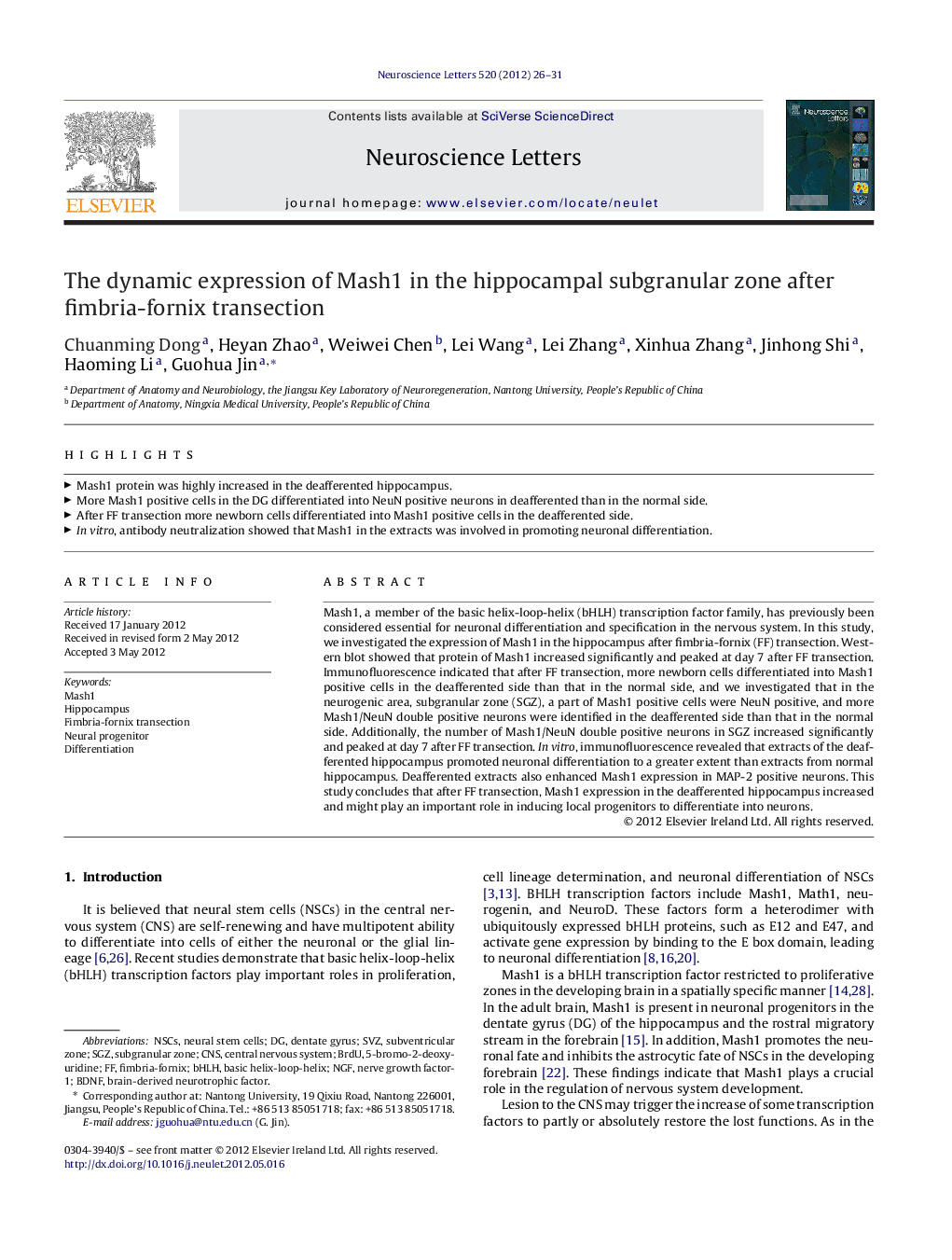| Article ID | Journal | Published Year | Pages | File Type |
|---|---|---|---|---|
| 4344471 | Neuroscience Letters | 2012 | 6 Pages |
Mash1, a member of the basic helix-loop-helix (bHLH) transcription factor family, has previously been considered essential for neuronal differentiation and specification in the nervous system. In this study, we investigated the expression of Mash1 in the hippocampus after fimbria-fornix (FF) transection. Western blot showed that protein of Mash1 increased significantly and peaked at day 7 after FF transection. Immunofluorescence indicated that after FF transection, more newborn cells differentiated into Mash1 positive cells in the deafferented side than that in the normal side, and we investigated that in the neurogenic area, subgranular zone (SGZ), a part of Mash1 positive cells were NeuN positive, and more Mash1/NeuN double positive neurons were identified in the deafferented side than that in the normal side. Additionally, the number of Mash1/NeuN double positive neurons in SGZ increased significantly and peaked at day 7 after FF transection. In vitro, immunofluorescence revealed that extracts of the deafferented hippocampus promoted neuronal differentiation to a greater extent than extracts from normal hippocampus. Deafferented extracts also enhanced Mash1 expression in MAP-2 positive neurons. This study concludes that after FF transection, Mash1 expression in the deafferented hippocampus increased and might play an important role in inducing local progenitors to differentiate into neurons.
► Mash1 protein was highly increased in the deafferented hippocampus. ► More Mash1 positive cells in the DG differentiated into NeuN positive neurons in deafferented than in the normal side. ► After FF transection more newborn cells differentiated into Mash1 positive cells in the deafferented side. ► In vitro, antibody neutralization showed that Mash1 in the extracts was involved in promoting neuronal differentiation.
